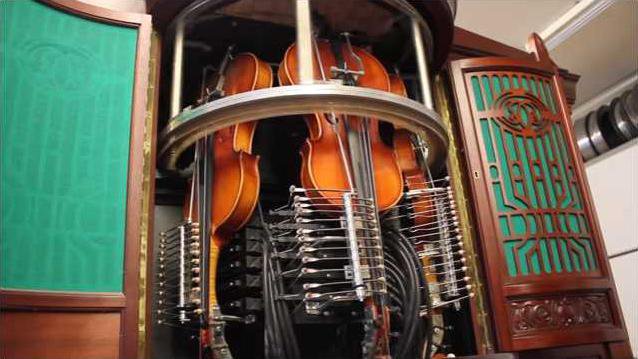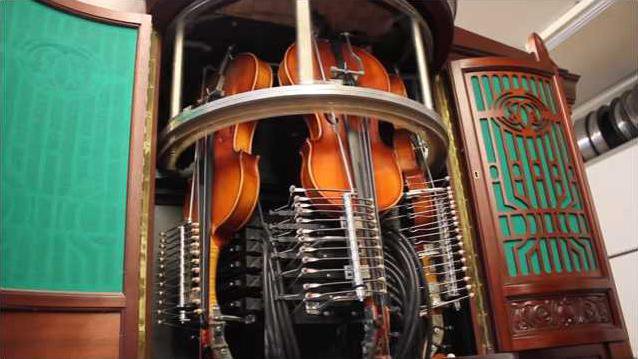THE MUSIC ROOM Player pianos will always be amazing to me.
I mean, think about it. Its a piano that looks like a ghost is playing it when you insert a rolled up punch card into it. The kid in me will always be blown away by this best kind of practical magic.
So imagine my pure dee-light when I stumbled across a player piano that also includes three self-playing violins. Its a player piano deluxe, and its as incredible as it sounds.
The Hupfeld Phonoliszt Violina was created by Ludwig Hupfeld for the 1910 Worlds Exhibition in Brussels, Belgium. I imagine the contraption caused quite a stir and elicited reactions of awe and wonder. (Meanwhile, our hand-held computers that we all take for granted werent even a twinkle in any inventors eye.)
The machine you see in this video is fully restored and gloriously whirs along as it plays "Lotusblumen Walzer" by E. Ohlsen. Each violin has its own set of fingers and a circular bow that rotates at varied speeds between the instruments as they sit upright in a circle.
If you close your eyes, you would have no idea that the music was played by a machine with a punch card and not by humans.
I mean, think about it. Its a piano that looks like a ghost is playing it when you insert a rolled up punch card into it. The kid in me will always be blown away by this best kind of practical magic.
So imagine my pure dee-light when I stumbled across a player piano that also includes three self-playing violins. Its a player piano deluxe, and its as incredible as it sounds.
The Hupfeld Phonoliszt Violina was created by Ludwig Hupfeld for the 1910 Worlds Exhibition in Brussels, Belgium. I imagine the contraption caused quite a stir and elicited reactions of awe and wonder. (Meanwhile, our hand-held computers that we all take for granted werent even a twinkle in any inventors eye.)
The machine you see in this video is fully restored and gloriously whirs along as it plays "Lotusblumen Walzer" by E. Ohlsen. Each violin has its own set of fingers and a circular bow that rotates at varied speeds between the instruments as they sit upright in a circle.
If you close your eyes, you would have no idea that the music was played by a machine with a punch card and not by humans.








